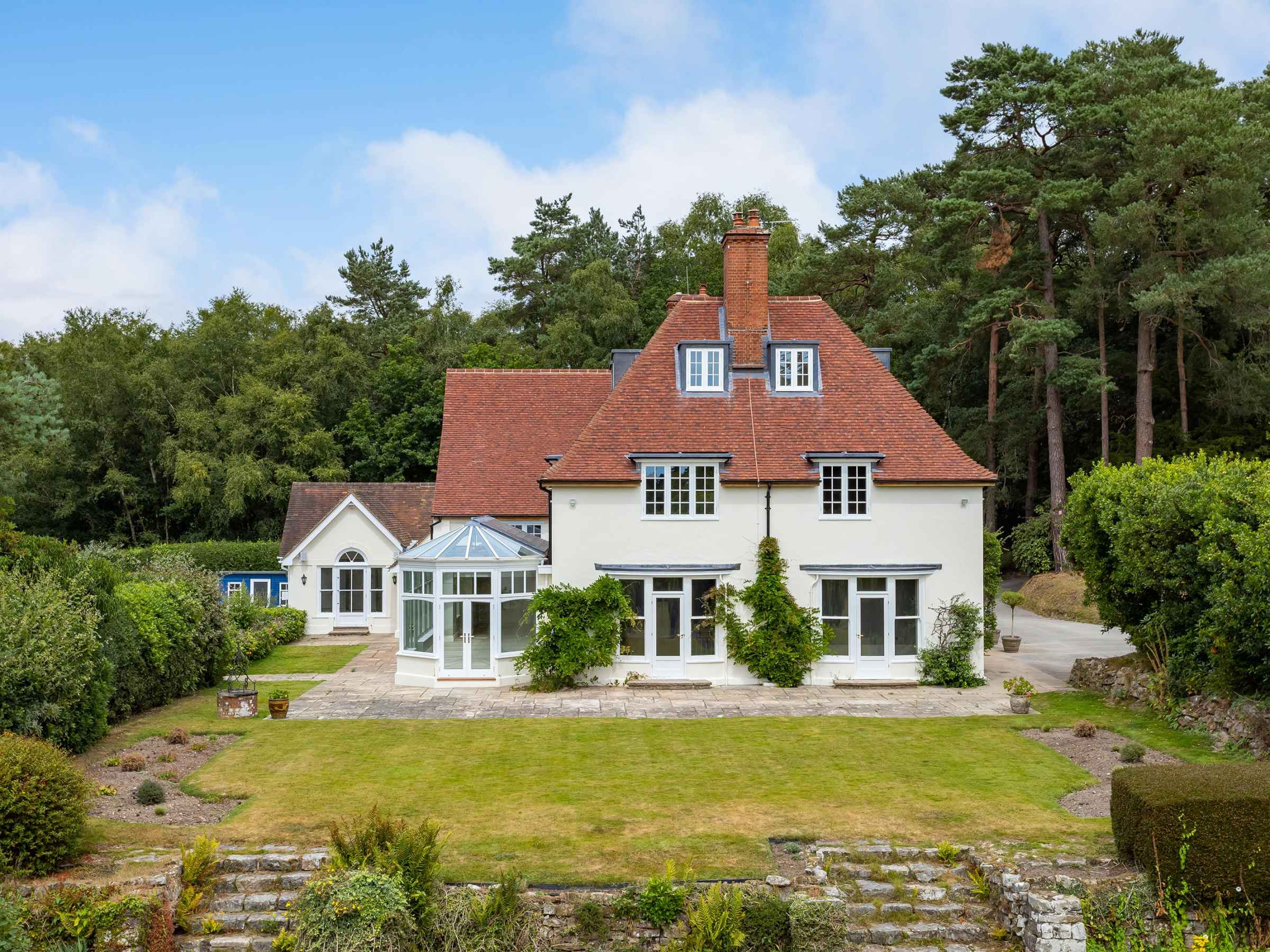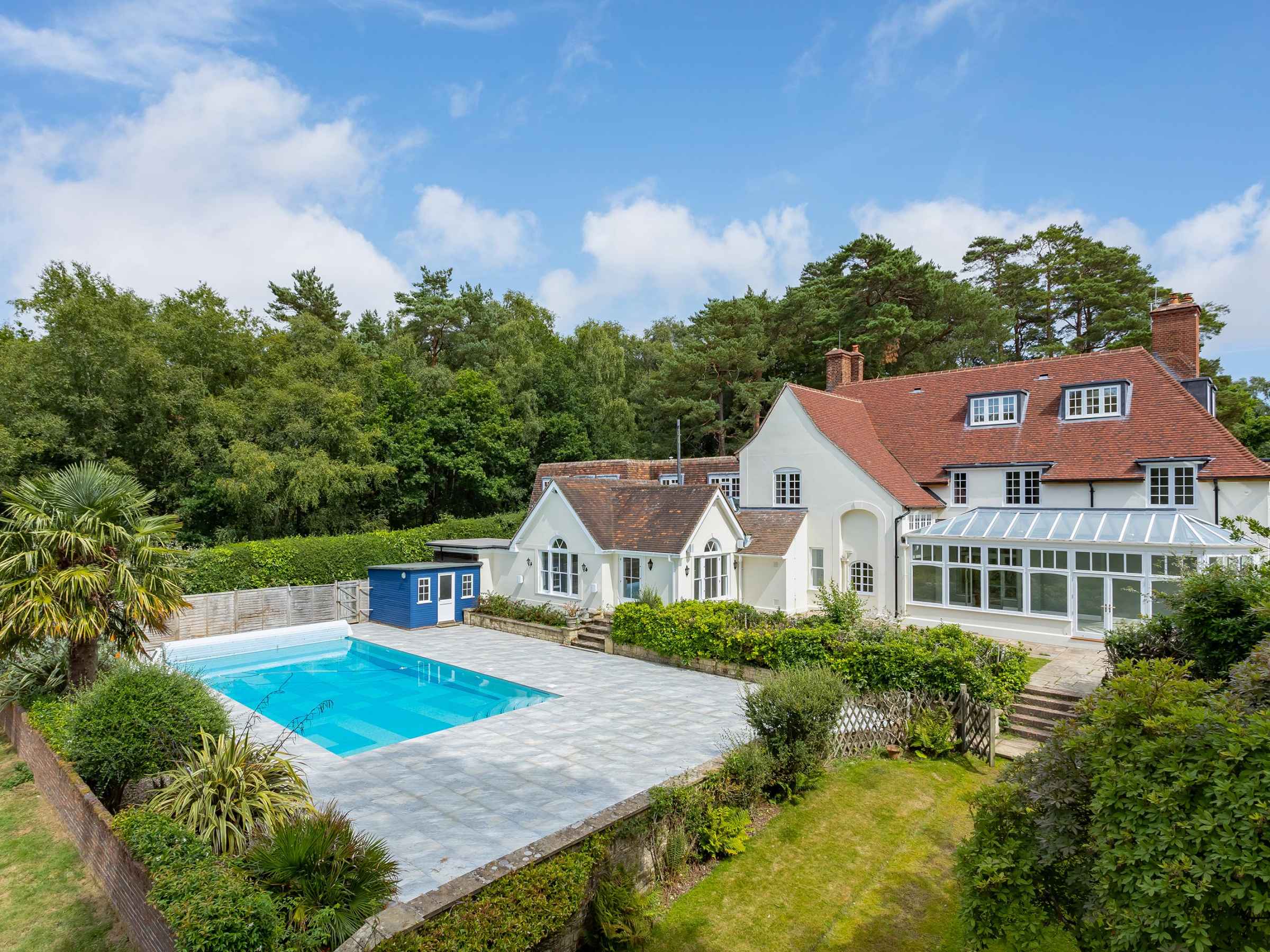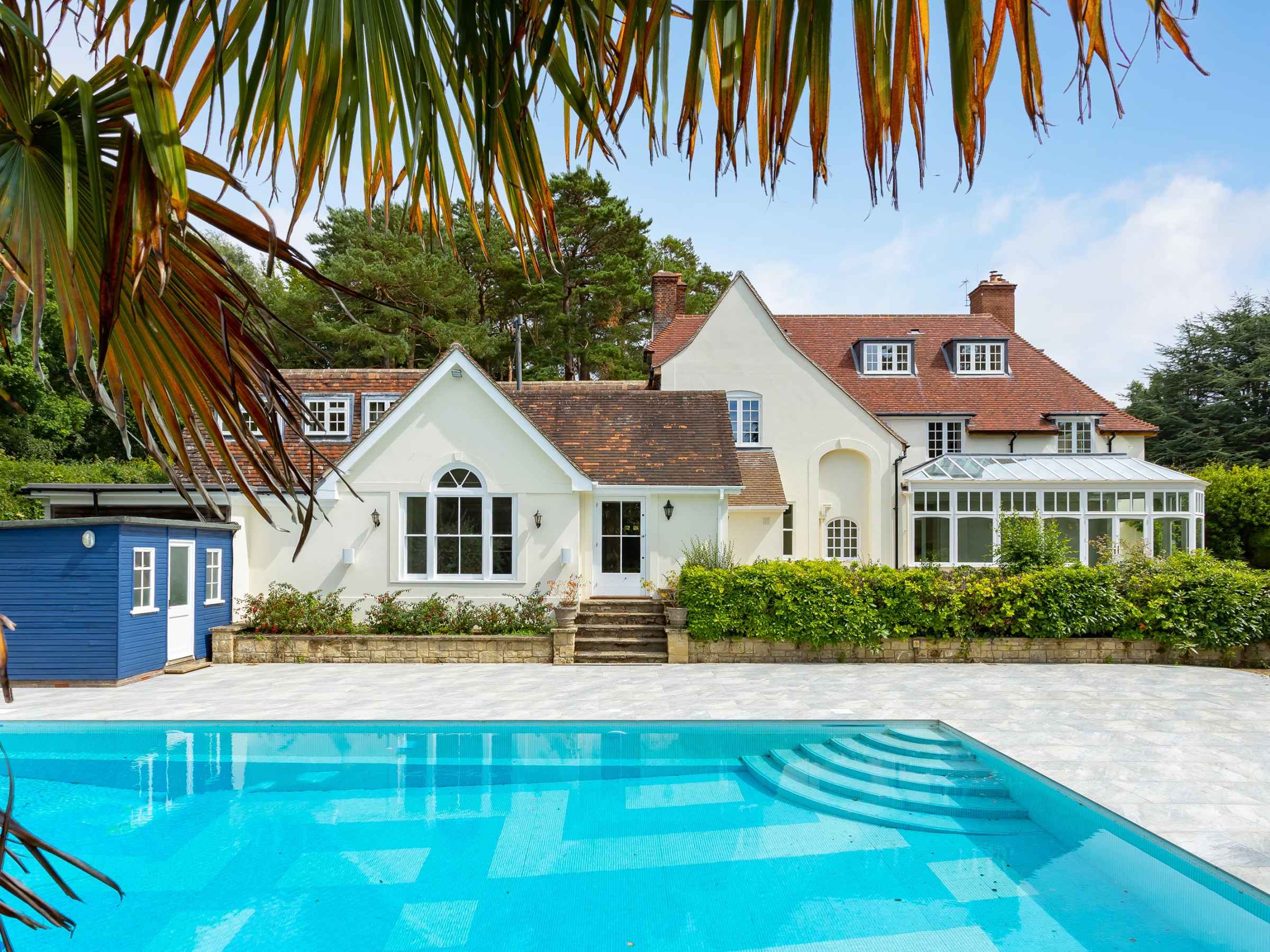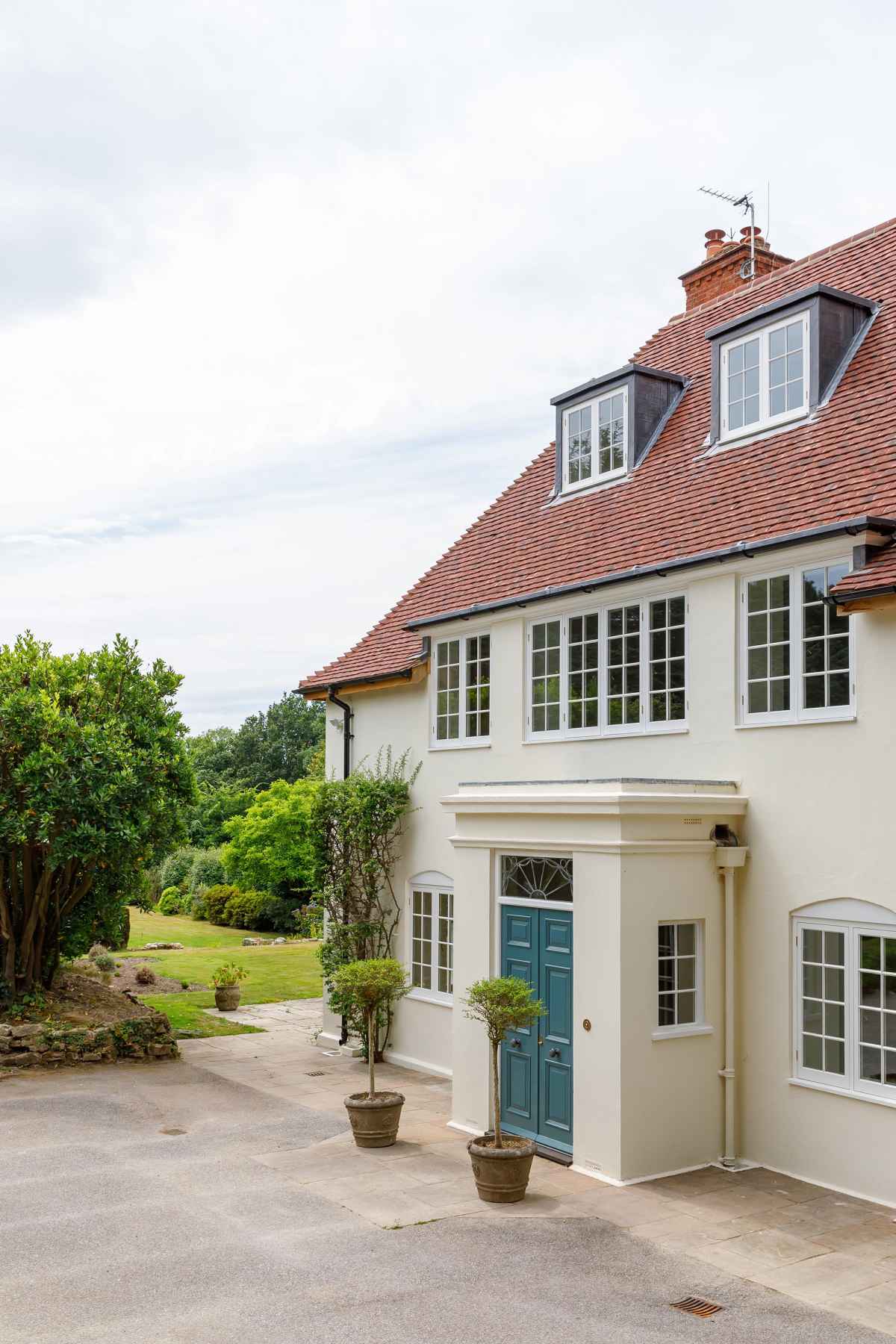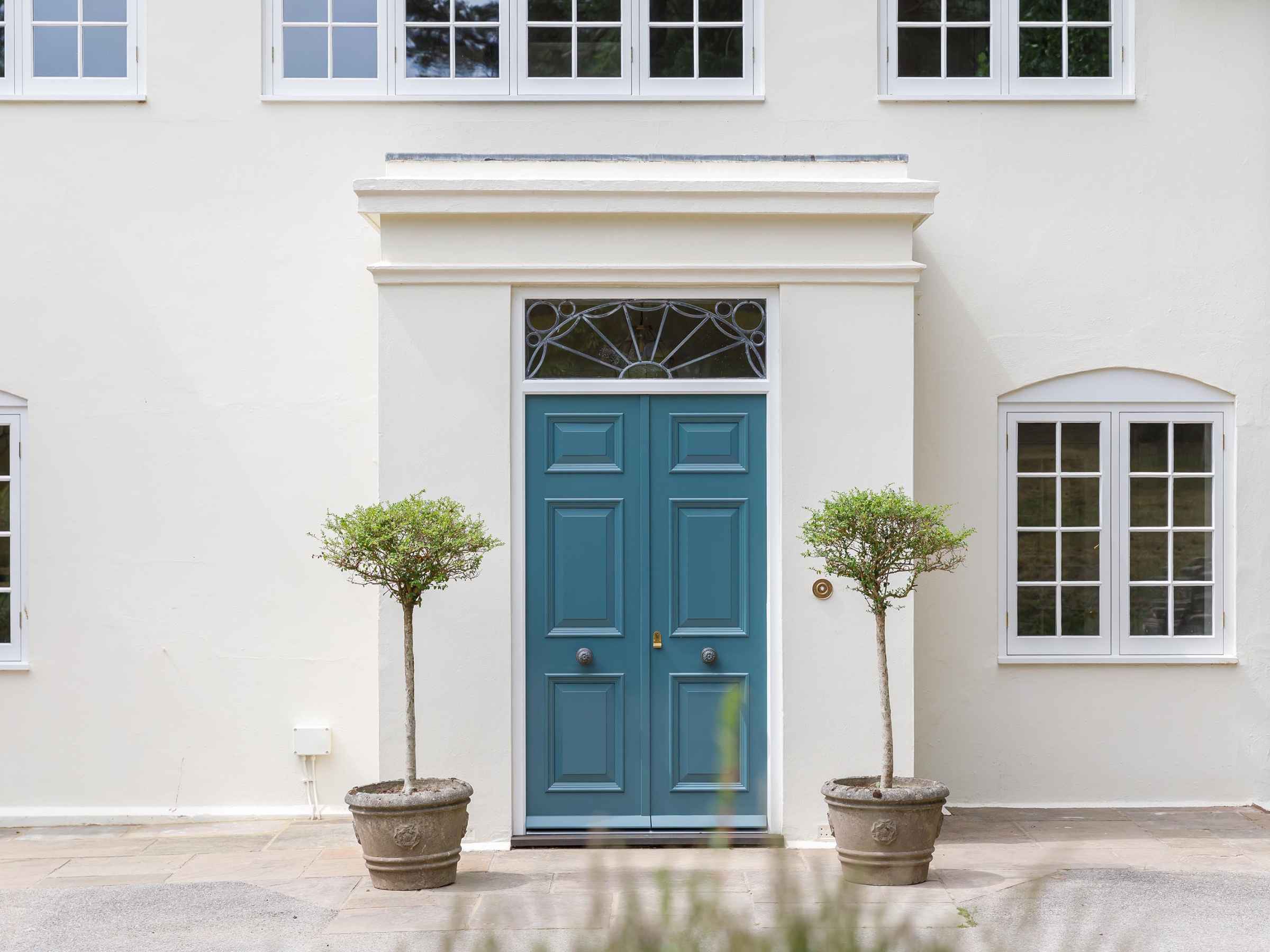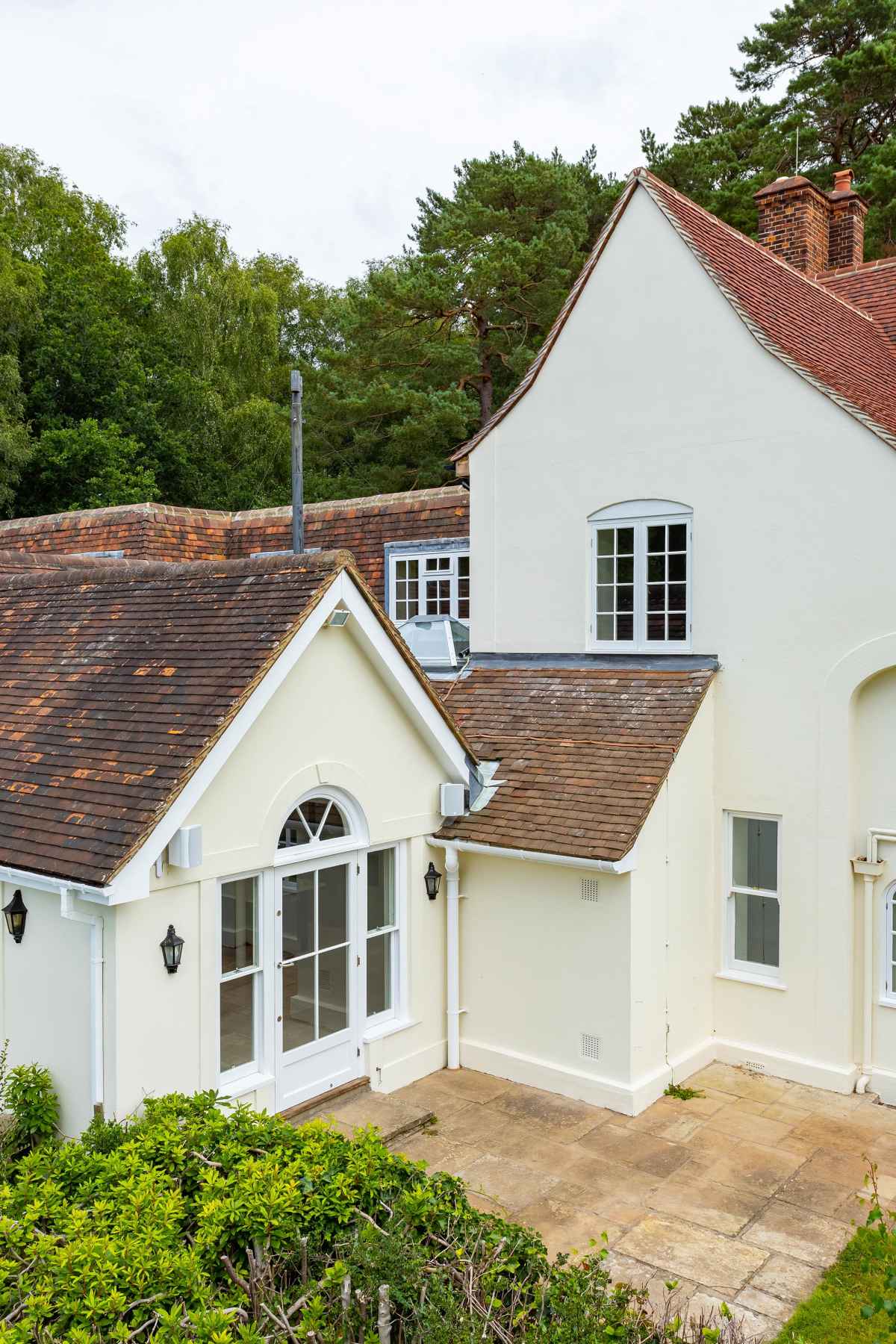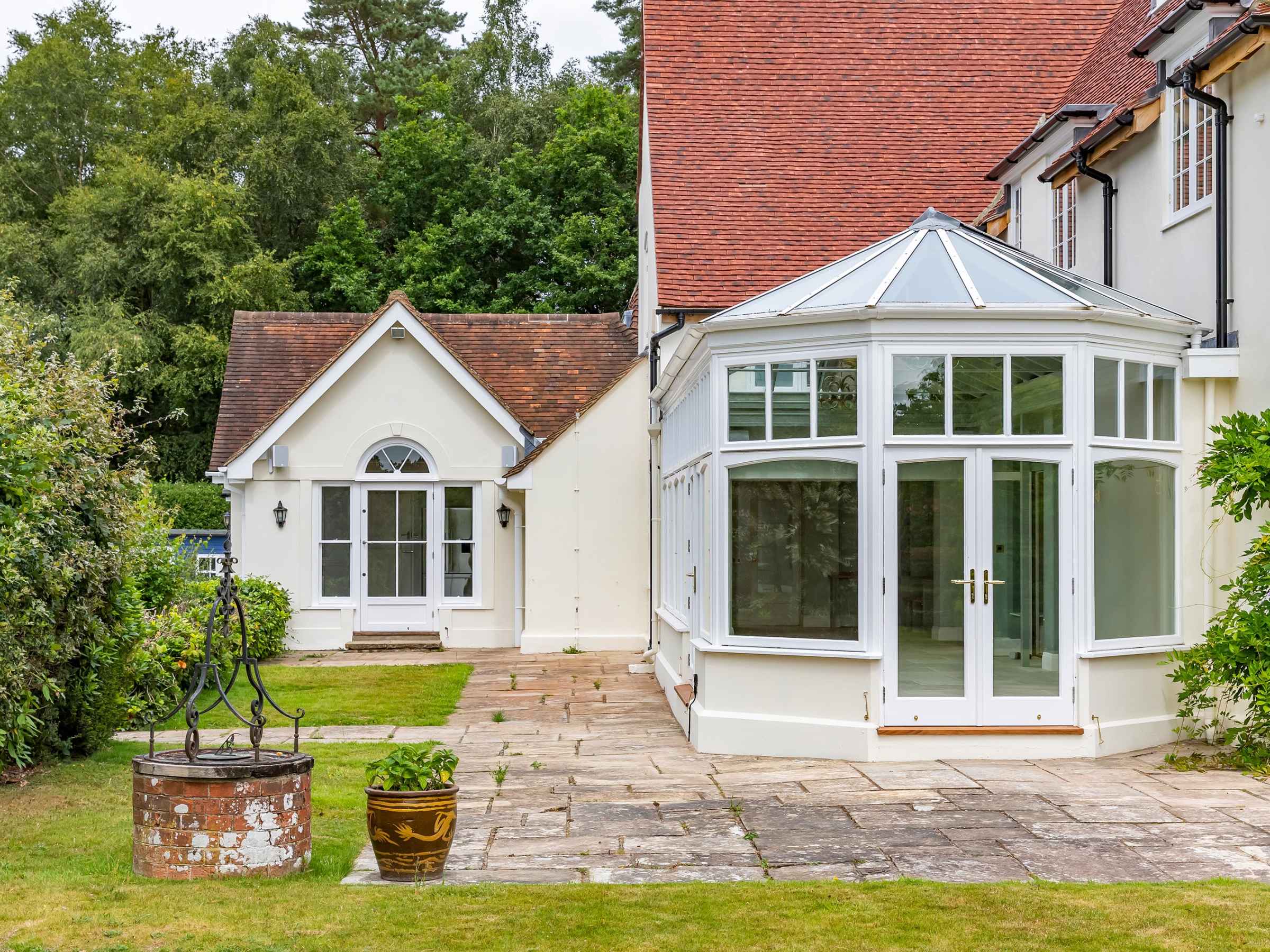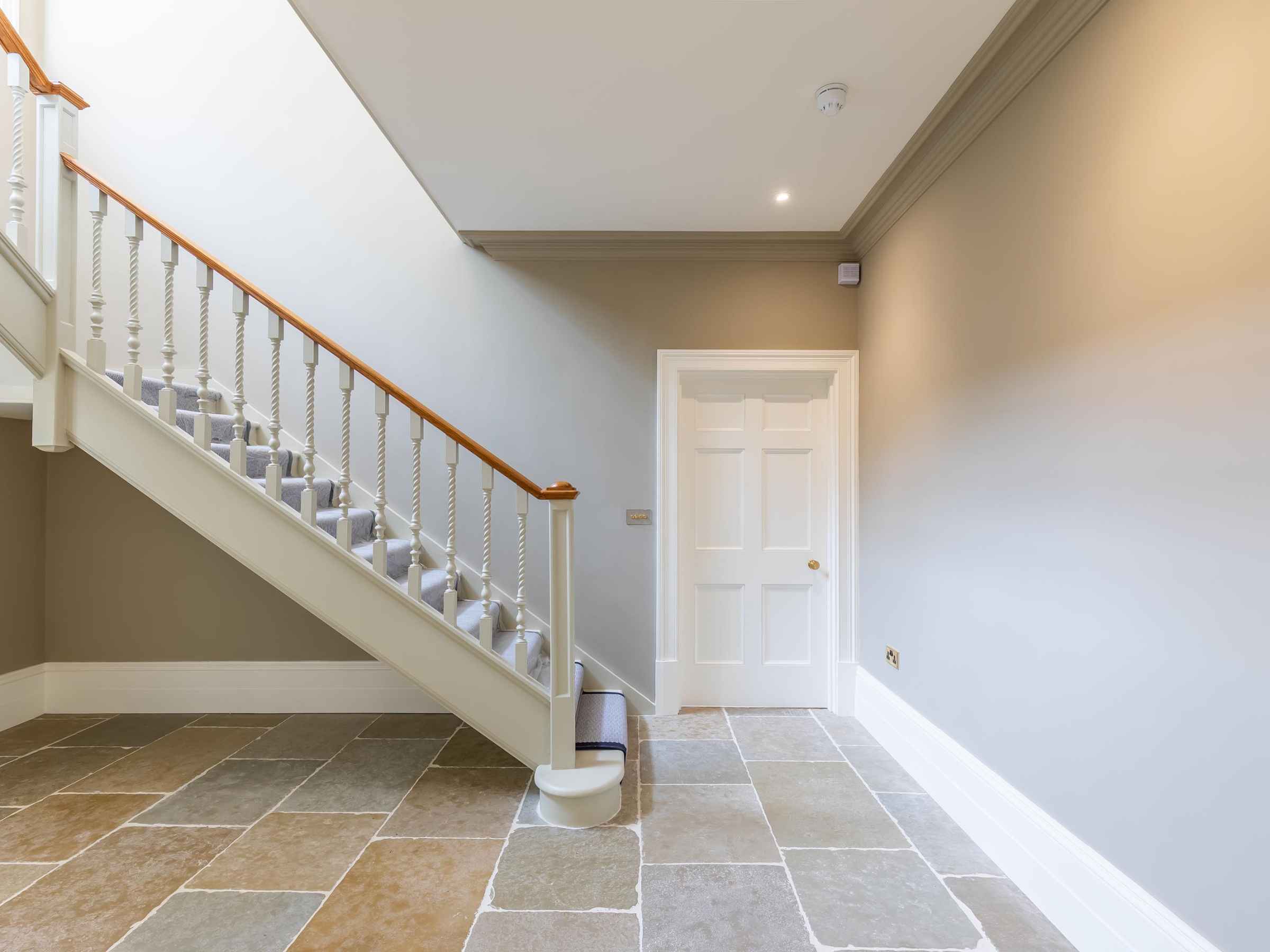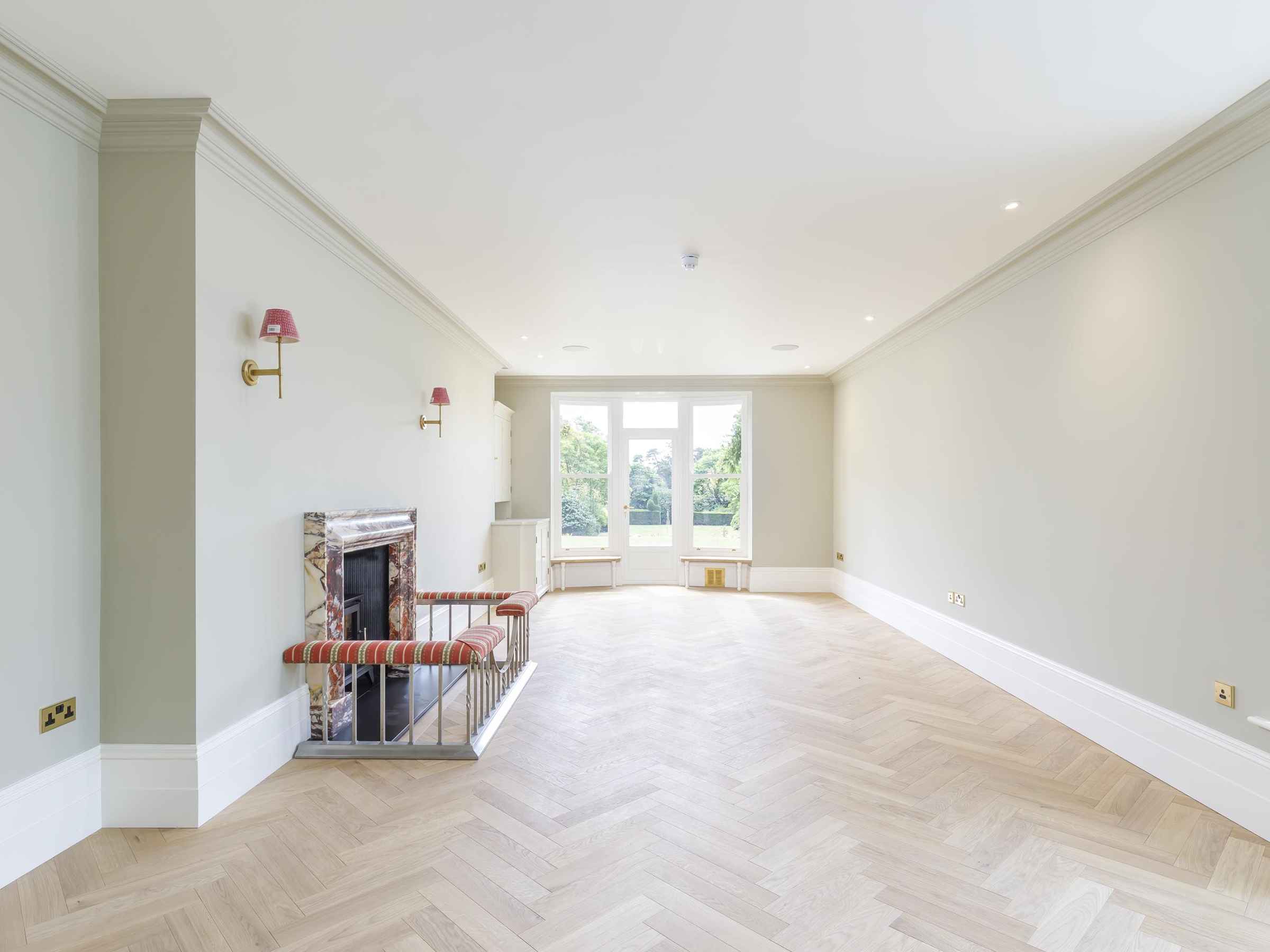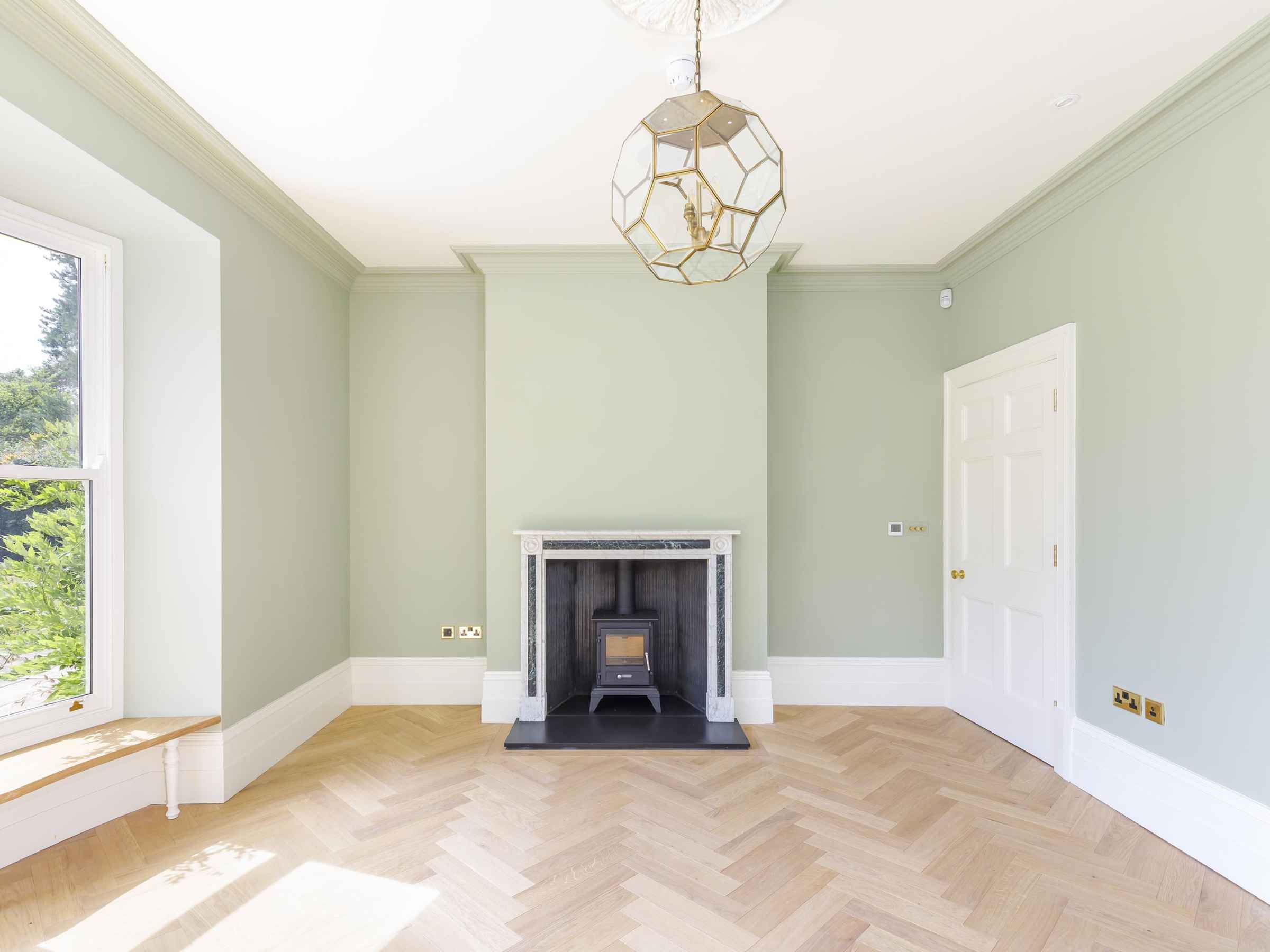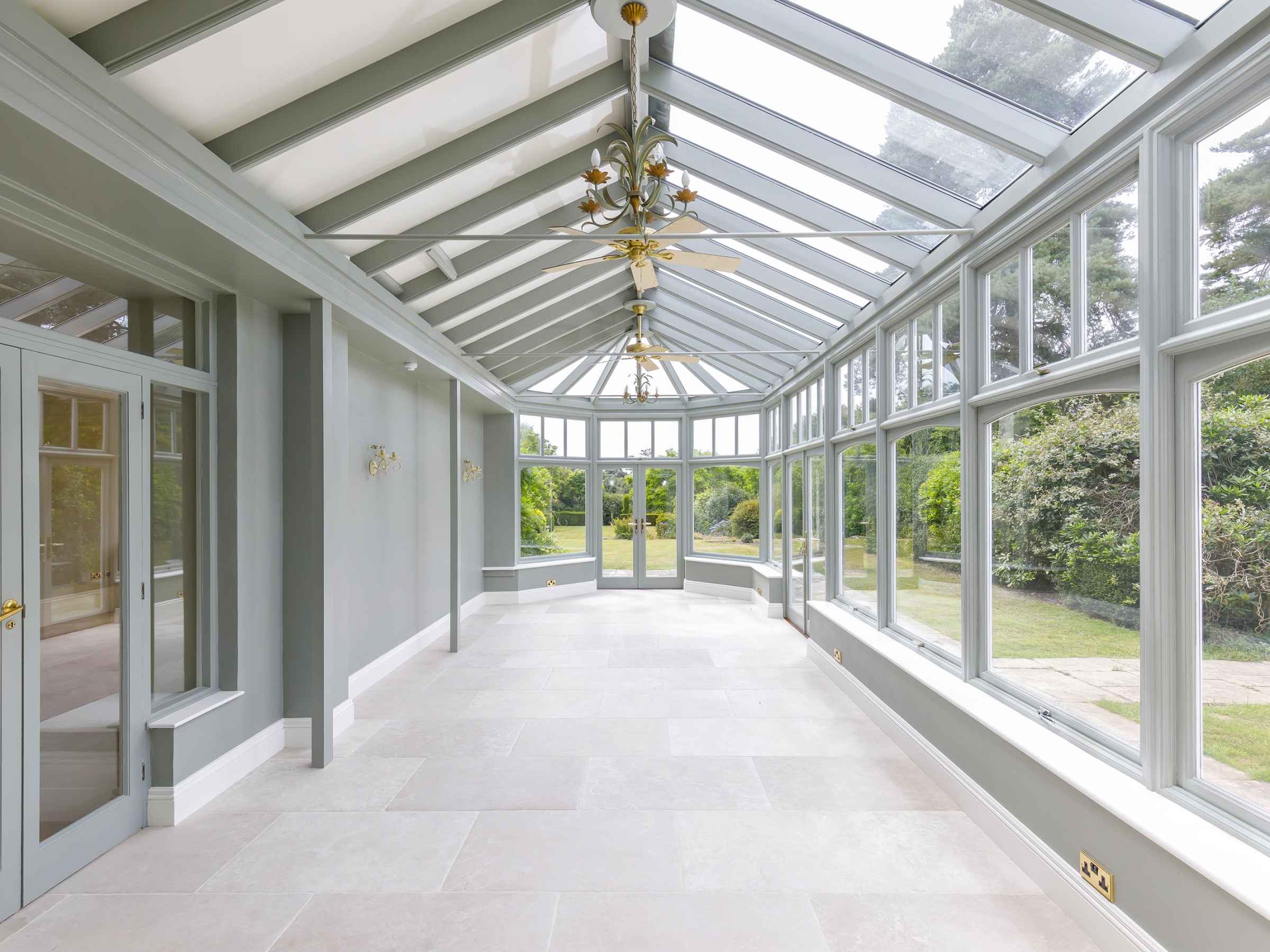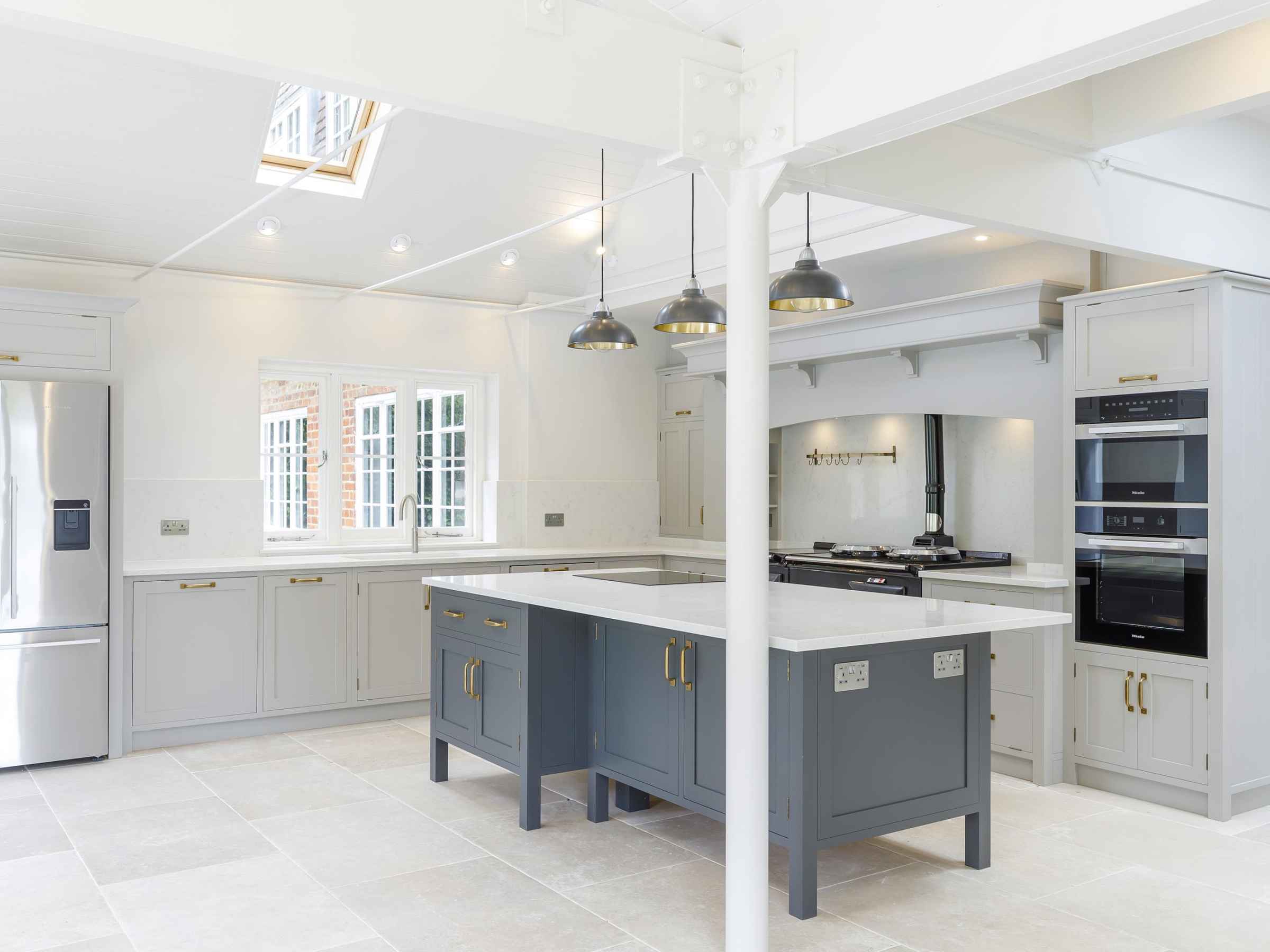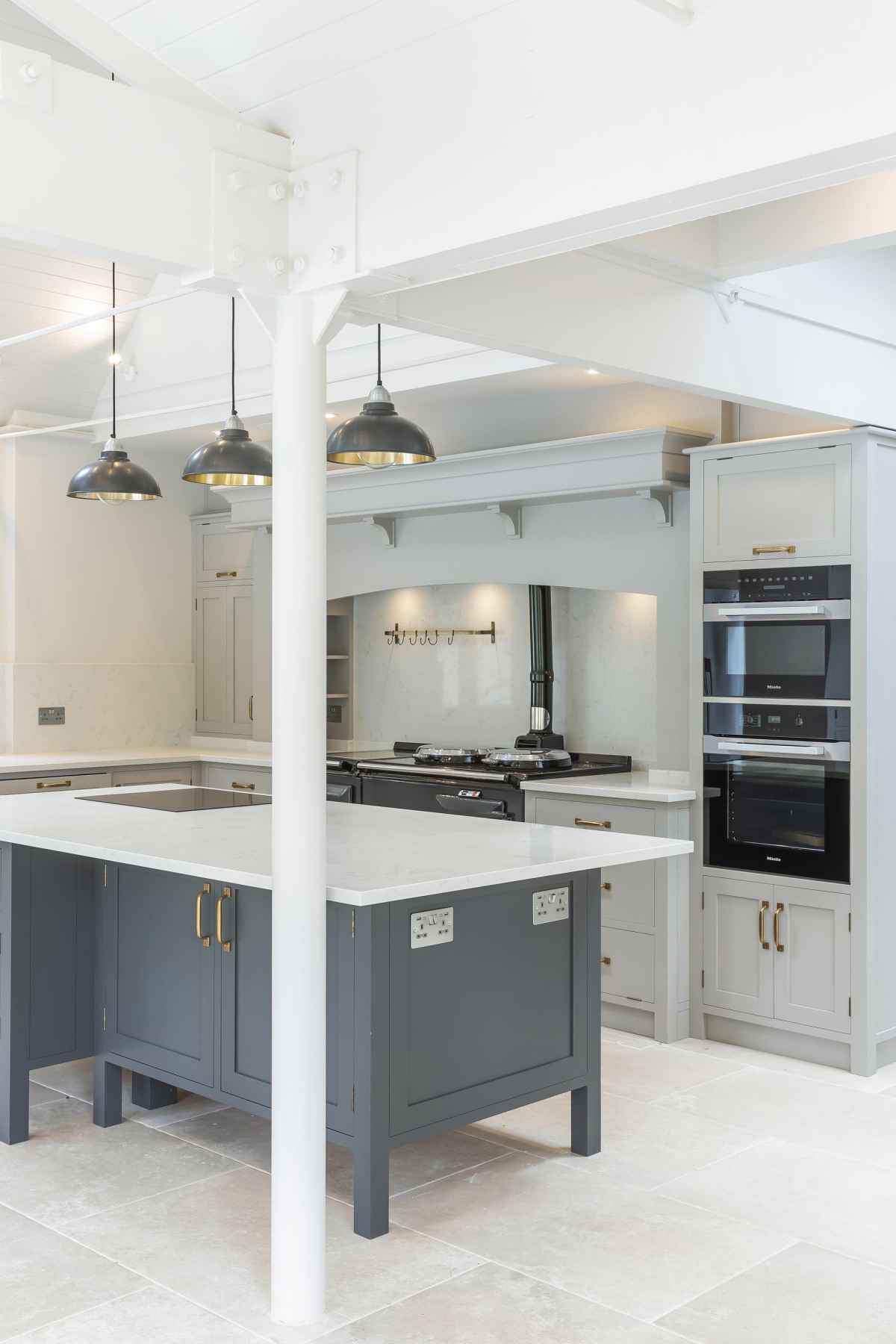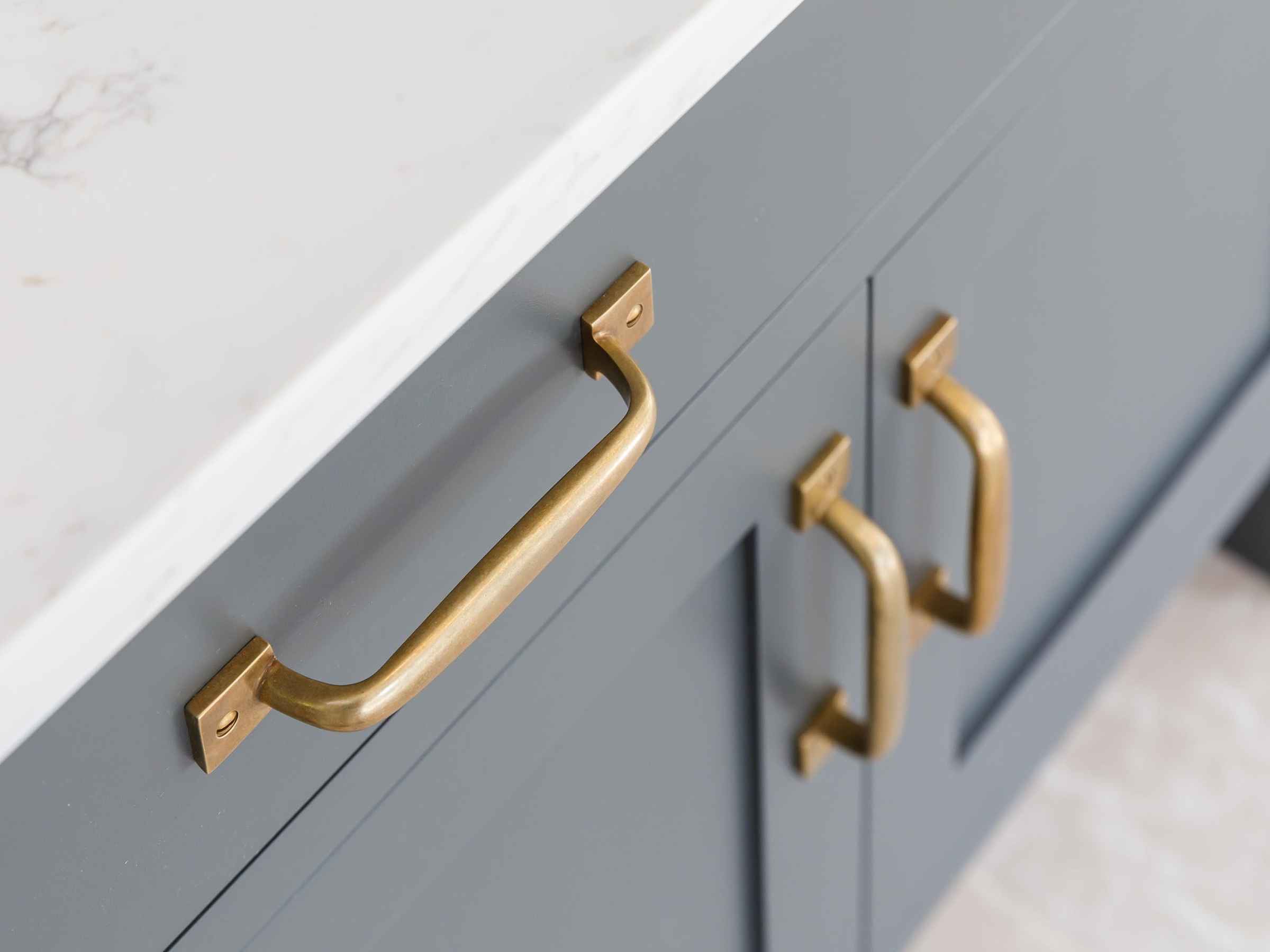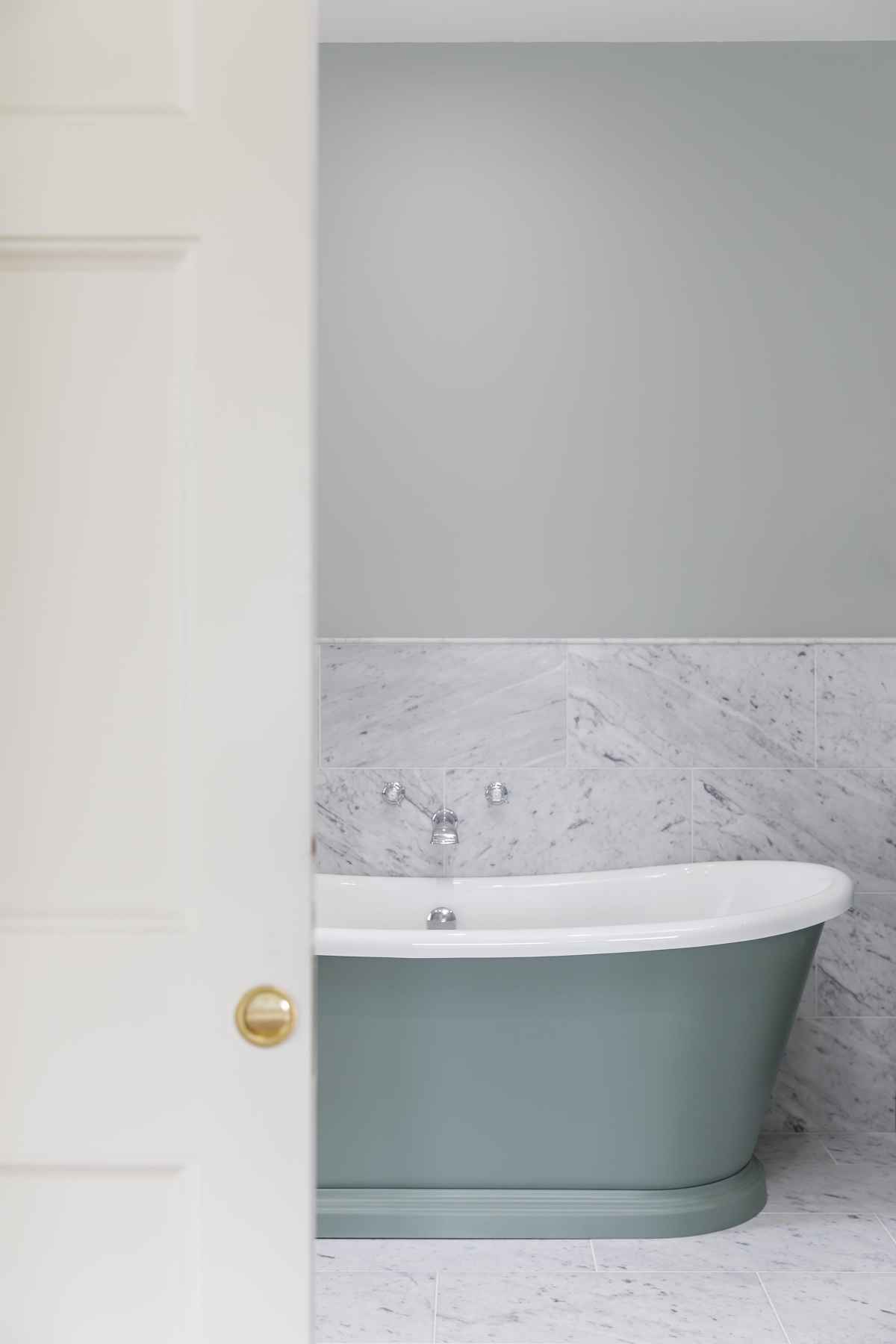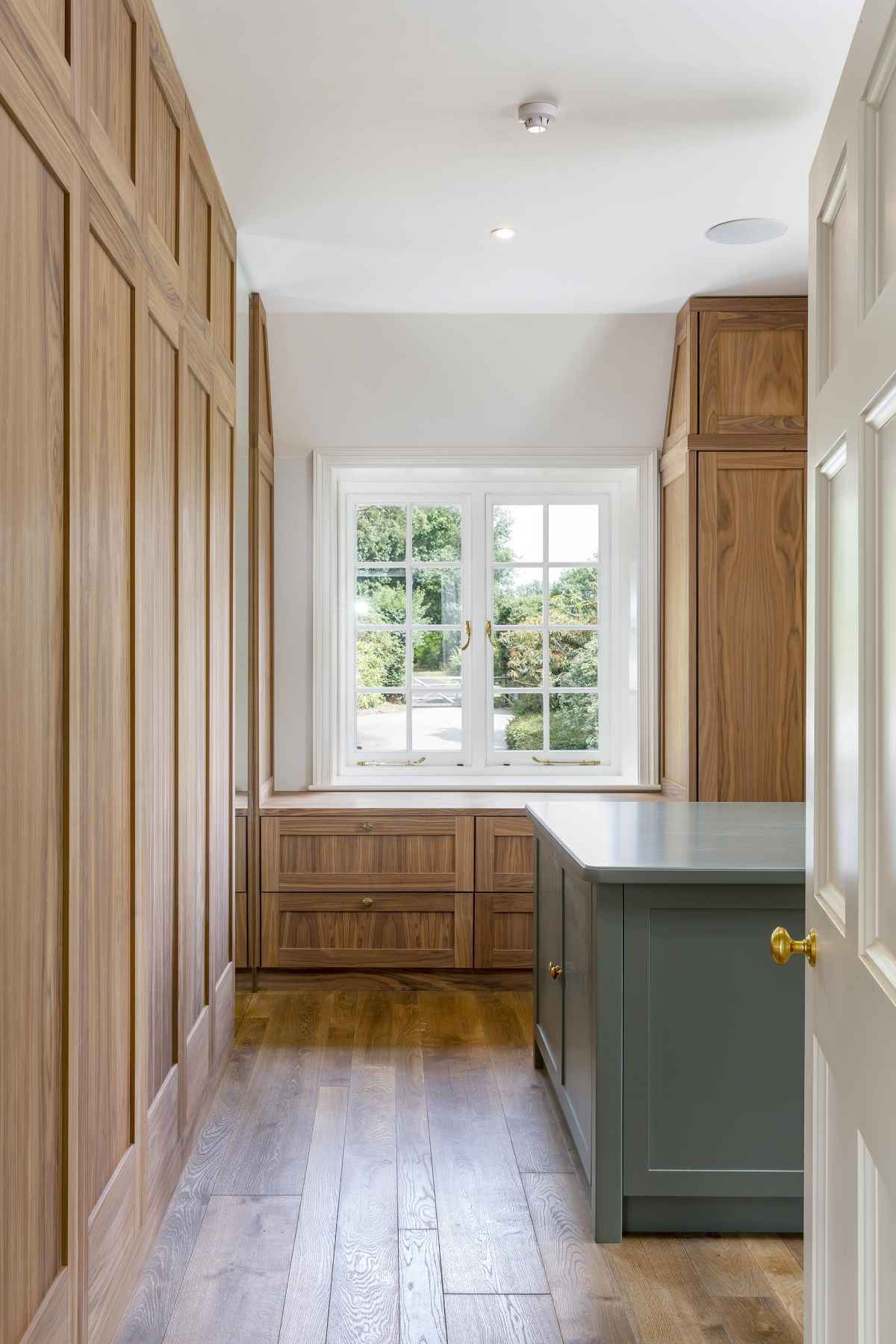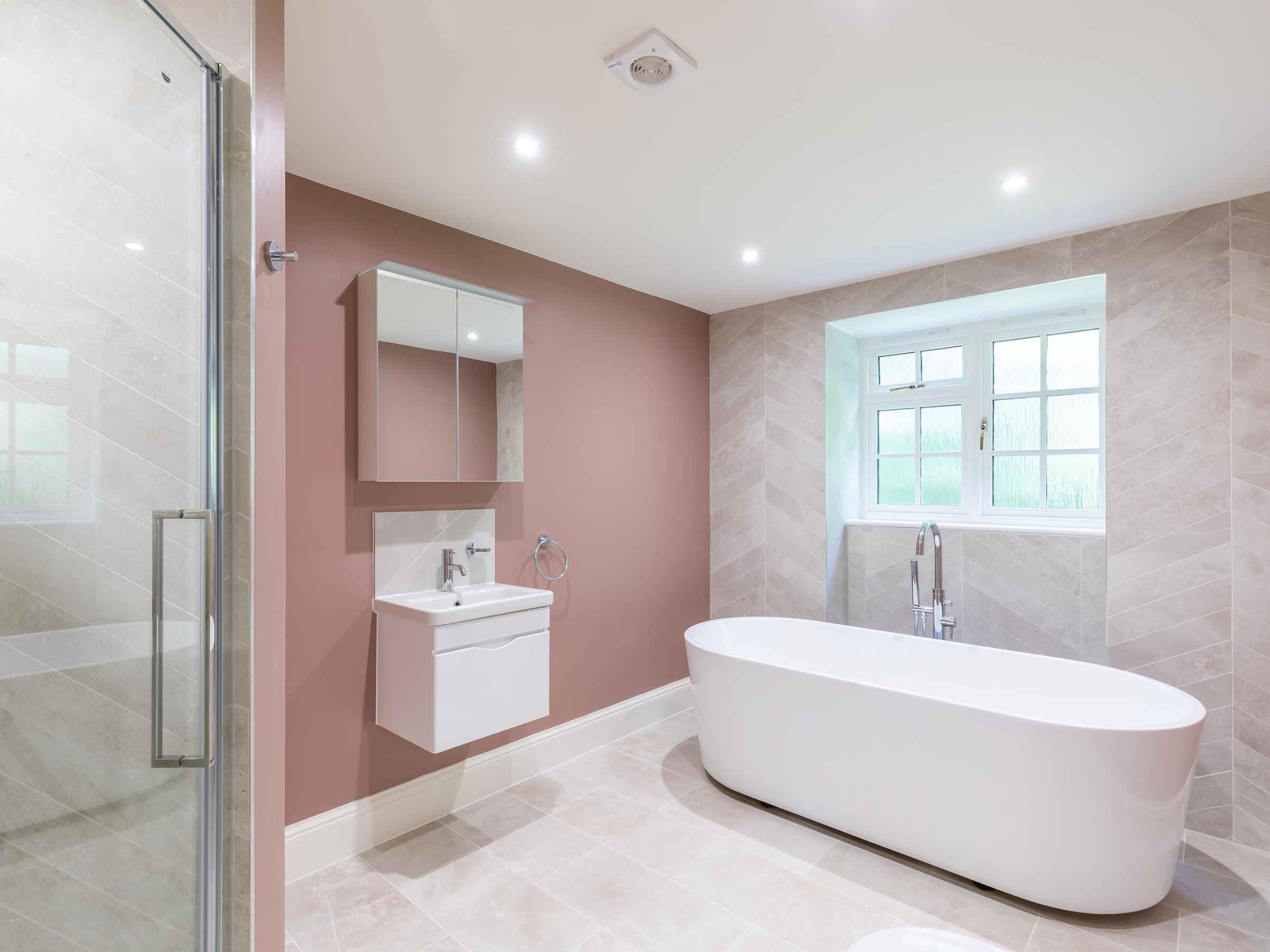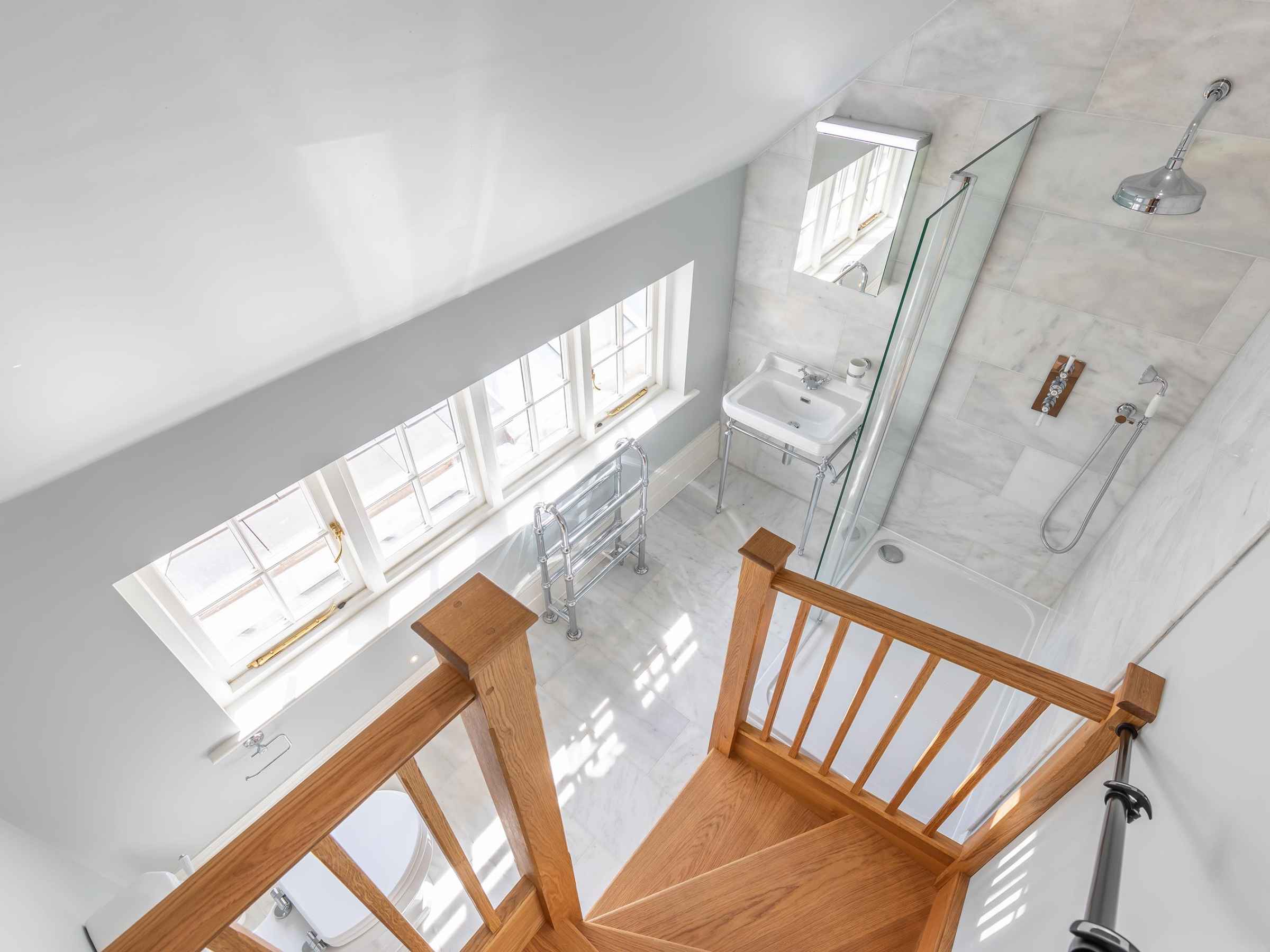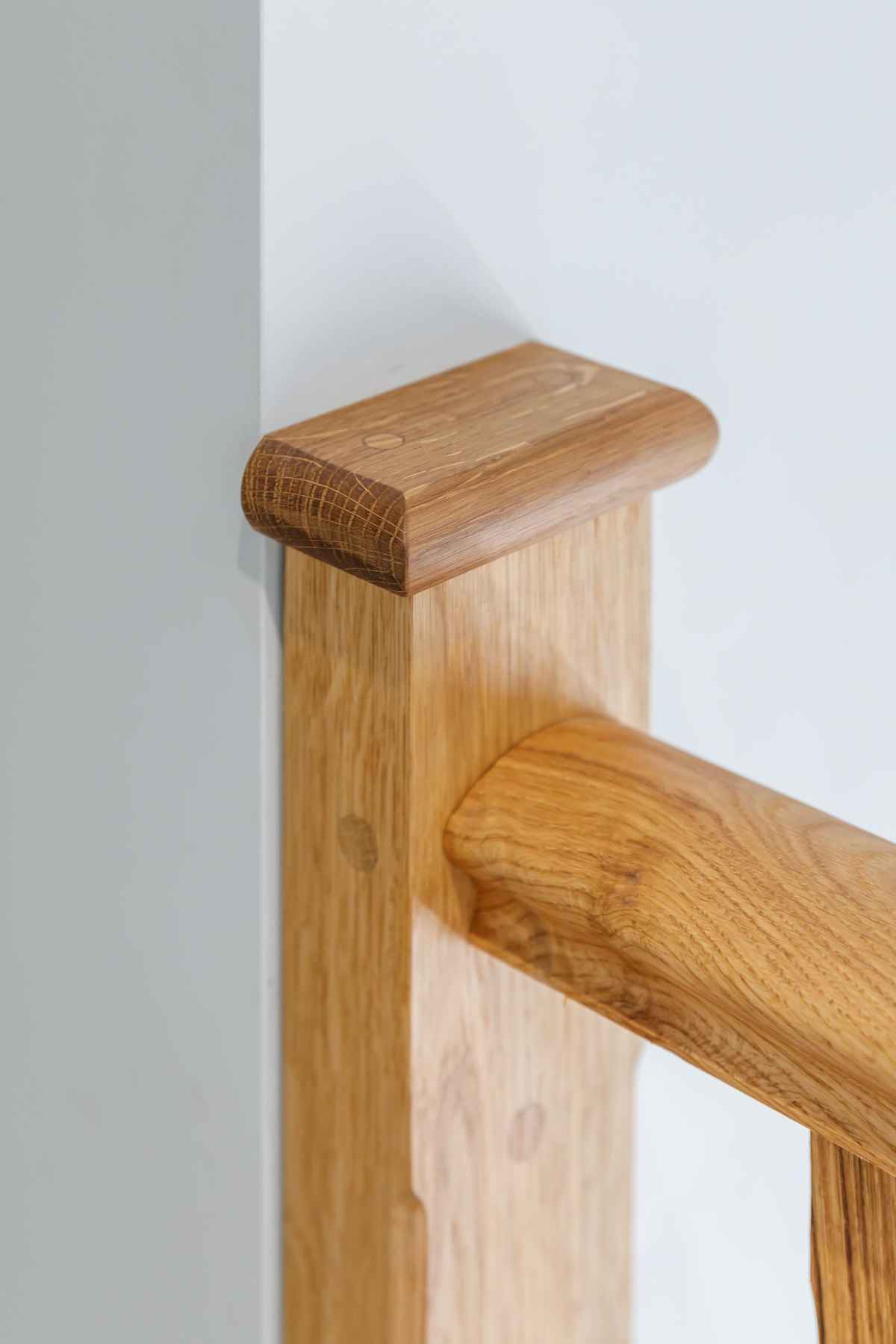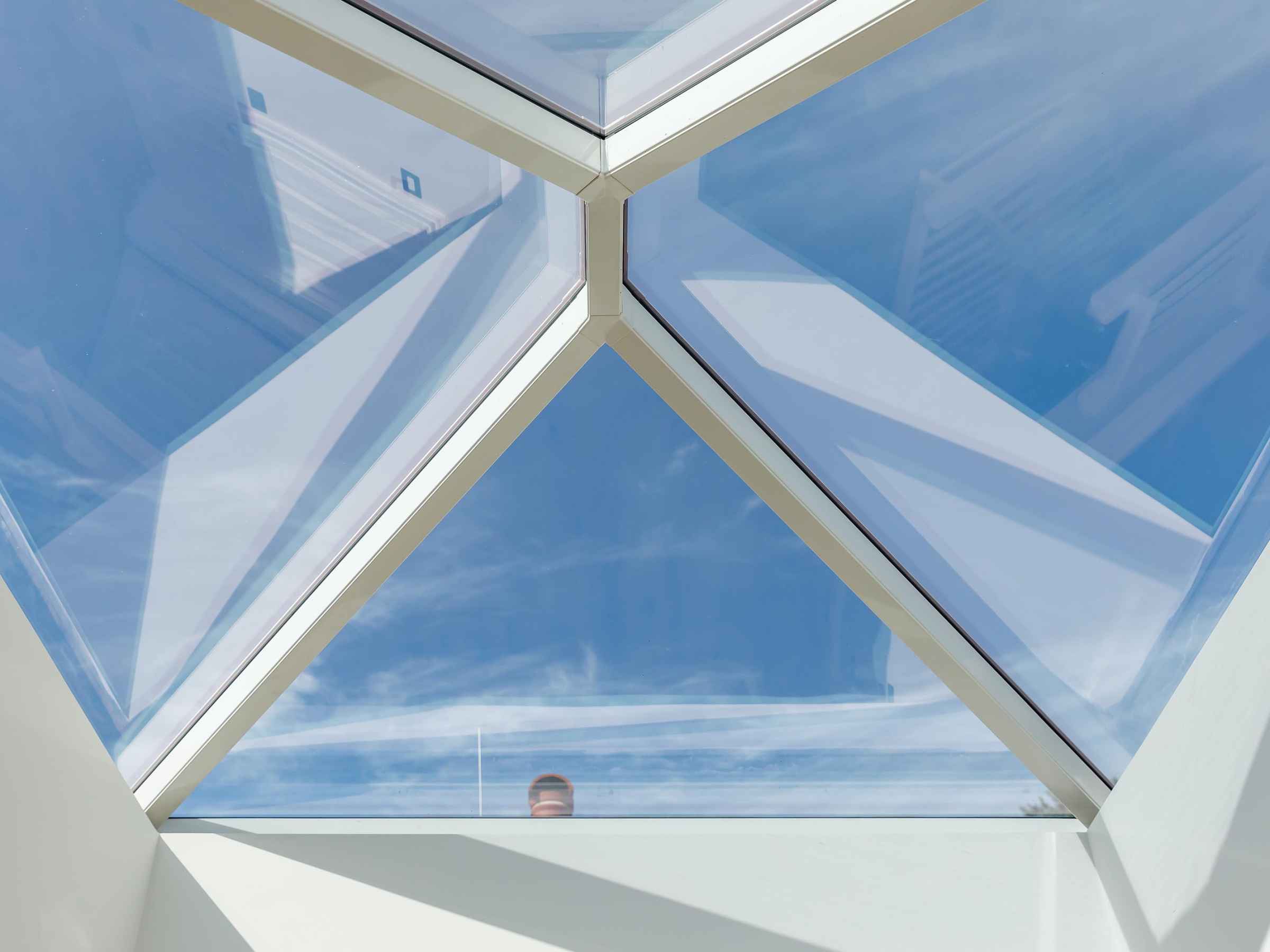19th Century Private renovation and roof repair
East Sussex
The property suffered significant fire damage in April 2020. The main roof was lost completely, and smoke and water damage were incurred throughout.
The fire damage meant a complete rebuild of the roof structure and the strip-out and replacement of all internal finishes, services and fittings.
The building was inspected by a structural engineer and temporary works carried out before the building could be entered safely.
To accurately recreate the roof, great care was taken to survey and record the original roof structure from the site remains and from client supplied records.
An oak dragon tie-post and flitch ring-beam arrangement originally supported the second-floor structure within the pitched roof. This was replaced in steelwork, which had the benefit of allowing the second-floor space to be opened up.
An unusual cast-iron, radiant skirting heating system that had been installed throughout the property during the 1960s was no longer available and so a wet underfloor heating system was installed to provide a similar aesthetic.
Fire damage was such that the Building Regulations required an upgrade of most of the external fabric, including the roof, walls, floors, and all windows. This significantly improved the energy efficiency of the building.
In the process of stripping back the external walls to brickwork, a corrugated bitumen-based damp proofing system called ‘Newtonite’ was discovered and was likely installed in the house in the 1960s. This was replaced with the modern equivalent of a plastic cavity drain system. The walls were then insulated internally with an insulation-backed, dry-lining plasterboard to avoid any disturbance to the external appearance of the building.
The new roof structure was insulated between and below the rafter line to maintain the original eaves detail and roof levels.
Now a sympathetically restored, energy efficient, family home that will stand the test of time.
